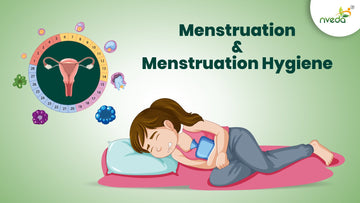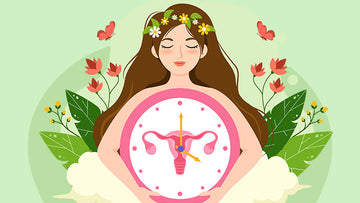Menstruation is a natural part of life for millions of people around the world, marking an essential function of the female reproductive system. However, it's a topic that still carries a certain level of stigma and misinformation. Understanding menstruation and practicing proper menstrual hygiene is crucial not only for physical health but also for mental and emotional well-being.
What is Menstruation?
Menstruation is a natural biological process in people with female reproductive systems, where the uterus sheds its lining, which is released as blood through the vagina, typically lasting 3 to 7 days. It usually occurs once a month and is part of the menstrual cycle, which typically lasts 28 days, though it can vary from person to person. During this cycle, hormones like estrogen and progesterone regulate the process, preparing the body for a possible pregnancy. If pregnancy doesn’t occur, the uterine lining is shed, resulting in menstruation.
The Importance of Menstrual Hygiene
Menstrual hygiene is a crucial part of health, as it involves using the right products and maintaining cleanliness to avoid infections and discomfort. Proper menstrual hygiene practices promote comfort, self-esteem, and overall well-being during menstruation.
Poor menstrual hygiene can lead to a range of health issues, such as urinary tract infections (UTIs), bacterial or yeast infections, and skin irritations. Additionally, it can make a person feel embarrassed, anxious, or uncomfortable during their period. This is why understanding good menstrual hygiene practices is essential.
Menstrual Products: A Range of Options
When it comes to managing menstruation, there are several products available. Each person has unique preferences and needs, so it's important to explore and choose what works best for you.
-
Pads: The most common and traditional menstrual product. Pads are worn on the outside of the body, attached to your underwear, and absorb menstrual blood.
-
Tampons: These are inserted into the vagina to absorb menstrual blood internally. Tampons come in various absorbencies and sizes, and they offer more freedom of movement.
-
Menstrual Cups: A more sustainable option, menstrual cups are reusable silicone or rubber devices inserted into the vagina to collect menstrual blood. They can last for up to 12 hours before needing to be emptied and cleaned.
-
Period Underwear: Designed with absorbent layers built into the fabric, these are a comfortable, eco-friendly option that can be worn throughout the day.
-
Reusable Cloth Pads: An eco-conscious alternative to disposable pads. They are washable and can be used for years, which reduces environmental waste.
Best Practices for Menstrual Hygiene
Maintaining cleanliness during your period not only ensures comfort but also helps prevent infections. Here are some important tips for maintaining good menstrual hygiene:
-
Change Products Regularly: Whether you use pads, tampons, or menstrual cups, changing your product regularly is crucial. For pads and tampons, change every 4-8 hours, depending on your flow. For menstrual cups, empty and wash them every 8-12 hours.
-
Clean the Genital Area Properly: Wash your genital area with warm water and mild, unscented soap. Avoid douching or using harsh chemicals, as they can disrupt the natural pH balance of the vagina and lead to infections.
-
Dry Off Well: After washing, always dry your genital area properly to avoid excess moisture, which can cause irritation or fungal infections.
-
Dispose of Products Responsibly: Disposable pads and tampons should be wrapped and disposed of in a trash bin. Do not flush them down the toilet, as this can cause blockages and harm the environment.
-
Keep Your Products Clean: If you use reusable products like menstrual cups or cloth pads, ensure they are properly washed, sanitized, and dried before reusing them.







